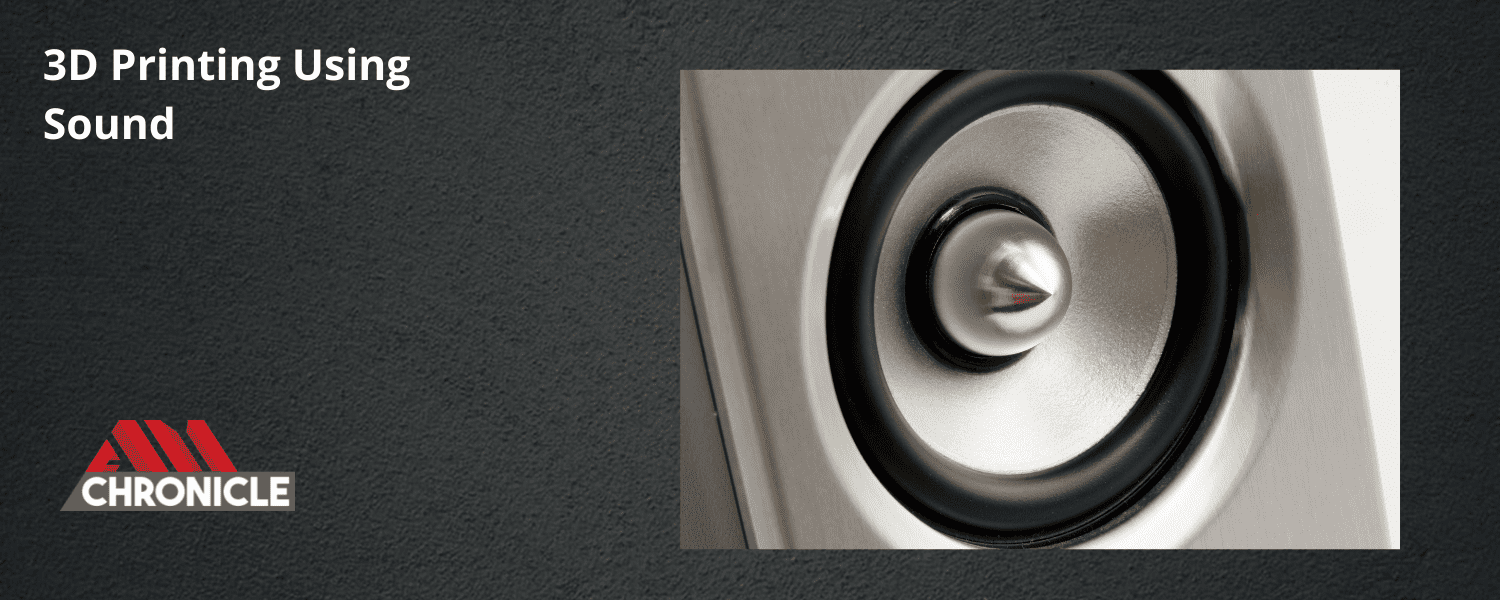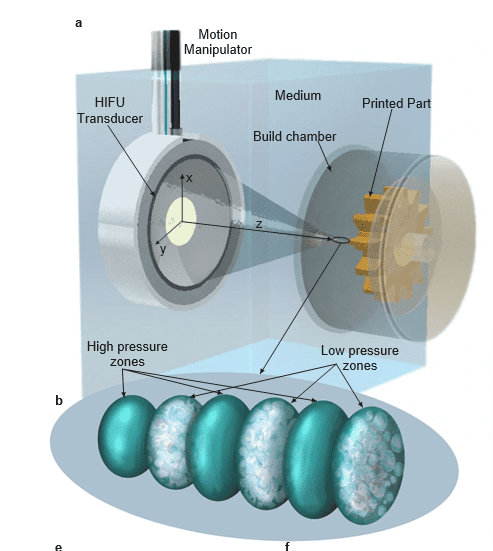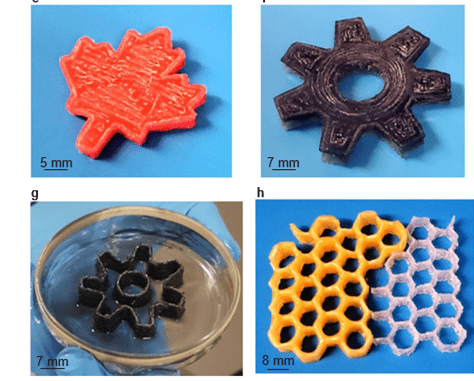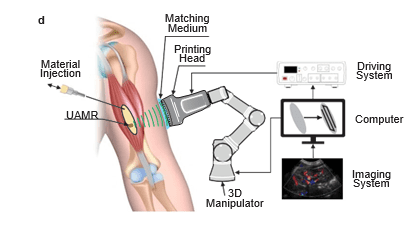In a recent study published in the journal Direct Communications, researchers from Concordia University deomstrated 3D printing using principles of ultrasound and sonochemistry. Sonochemistry branch of science that deals with studying the chemical effects of ultrasound waves on chemicals. The study suggests that sonochemistry can overcome the existing challenge of photo and thermal printing methods used for 3D printing. The method in which sound is used for 3D printing is known as direct sound printing (DSP).
Photo and thermal 3D printing methods and their limitations
Despite recent substantial advances in additive manufacturing (AM) technology, such as printing materials and processes, light and heat remain the only energy sources employed in AM to drive polymers’ chemical reactions or physical transformations. As a result, photo-sensitive resins, such as those used in stereolithography (SLA) or direct laser writing (DLW), and thermoplastic filaments or powders, such as those used in fused deposition modelling (FDM) or selective laser sintering (SLS), are the only materials utilized in AM processes.
The main limitation of the existing AM energy sources is that they do not fully use the chemistry’s control capabilities, whereas sonochemistry pushes these parameters to their limits. The sonochemical processes are caused by extremely high temperatures (over 15,000 K), high pressures (over 1000 bar), and fast heating and cooling rates (over 1012 K/s) inside active cavitation bubbles, known as hotspots. These rapid changes in temperature, pressure and cooling rates are not possible in the case of the photo and thermal AM method, whereas the sonochemical process can achieve them. The other advantage of sonochemical AM is that materials that could not be printed using the photo and thermal process can be printed using sonochemistry.
Methodology and Results
For 3D printing using the DSP process, the researchers filled the build chamber with the build material, which contained a monomer mixed with a curing agent. Further, a focused ultrasonic field was exposed to the build materials to solidify the material.
The solidification of the built materials happens as the chemically active acoustic cavitation solidifies the liquid resin and deposits it to the platform or the previously built plate. The process of 3D printing further takes place due to the selective movements of the transducer. The parameters that mainly affect the process are divided into two types, input parameters and output parameters. The input parameters include electric power, frequency, duty cycle and driving pulse period. The output parameters include properties of the medium that are the mixing ratio of monomer, curing agent, viscosity and surface tension. Properties such as porosity can be controlled by variation in the input and output parameters during the printing process.
The researchers used high-speed imaging experiments to examine the printing process. The results indicate the presence of ultra-active microreactor (UAMR) regions in which the active cavitation bubbles are created, and the chemical reactions responsible for the 3D printing happened. Further, the mechanical characterization test was conducted to compare the parts printed by DSP and those printed by other methods. The results show that porosity during the DSP process depends on the input and the output parameters. The results also indicate that the printing process occurs due to the cavitation phenomenon. Additionally, the method proposed by the author also uses the cavitation phenomenon for the DSP printing process.
Applications
One of the potential application of DSP discussed by the researchers were inside body bioprinting, during which a syringe can be used to supply the monomer material inside the body, and further, the material can be printed using the sound waves. The method can be used in a wide range of medical applications and possibly remove the need for surgery.
The other application discussed was remote, distant printing (RSP), in which the material can be printed remotely by using sound waves. The method has a wide range of applications in engineering and space areas. Additionally, it can also be used in the bio-printing area for various medical applications.
Further, the authors also discussed the application such as selective integration of optical, mechanical or electrical properties in the materials using the DSP method. The method can be used for maintenance of the machines and can also be used to develop new solutions and products.
Limitations and Future Scope
The main limitation of the DSP method is print overhanging structure as the printed spots need additional support in case of complex products. The other limitation is printing multi-material with the help of DSP, as the polymer chamber needs to be filled every time with a different material.
The future scope of the technology is developing an industrial machine of DSP, which can be used to print a wide range of materials. Additionally, the bio-medical application needs further research for approval. The lack of standards and specifications is also one of the key limitations of the technology.
Source:
Habibi, M., Foroughi, S., Karamzadeh, V. et al. Direct sound printing. Nat Commun 13, 1800 (2022). https://doi.org/10.1038/s41467-022-29395-1





